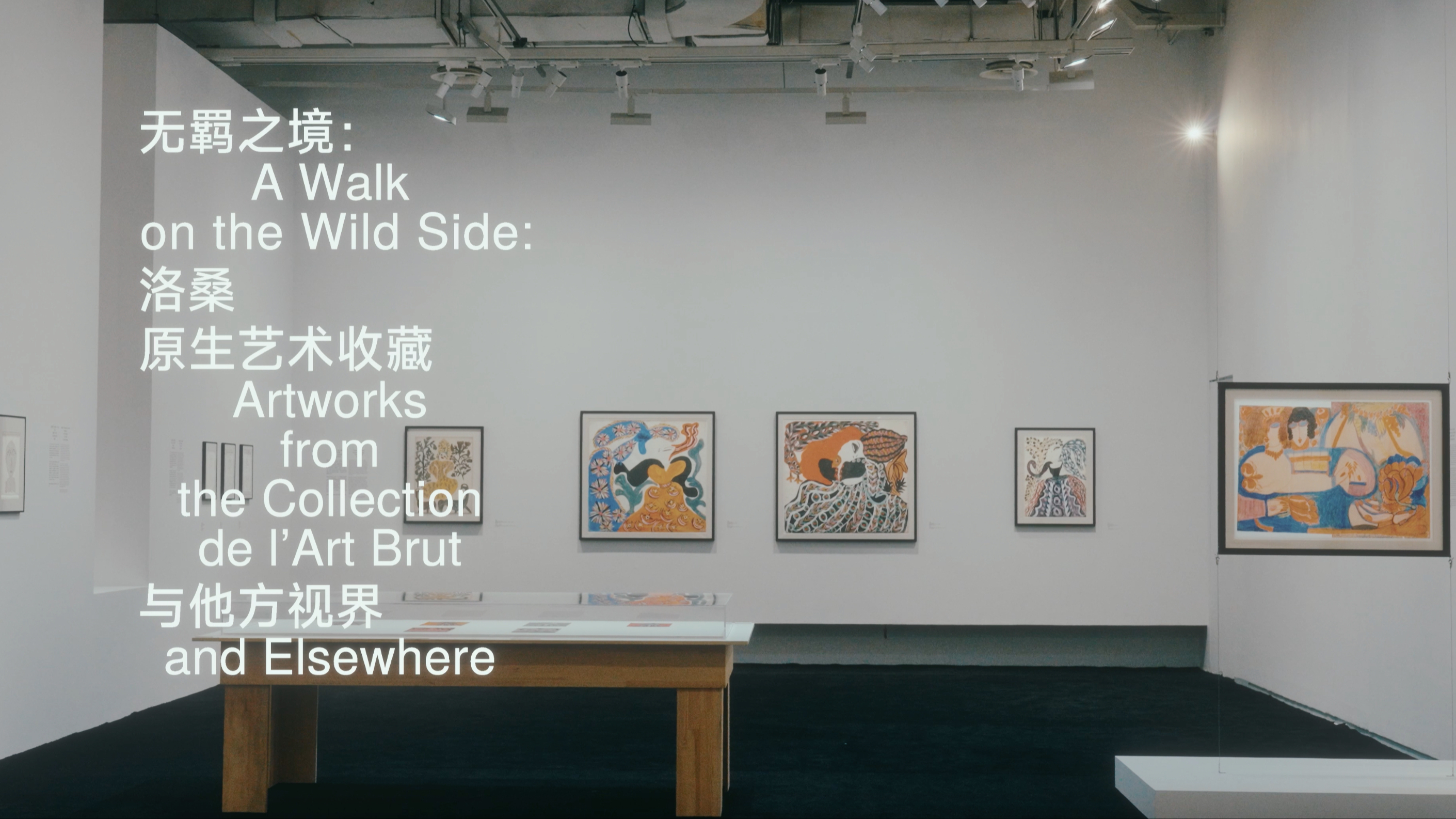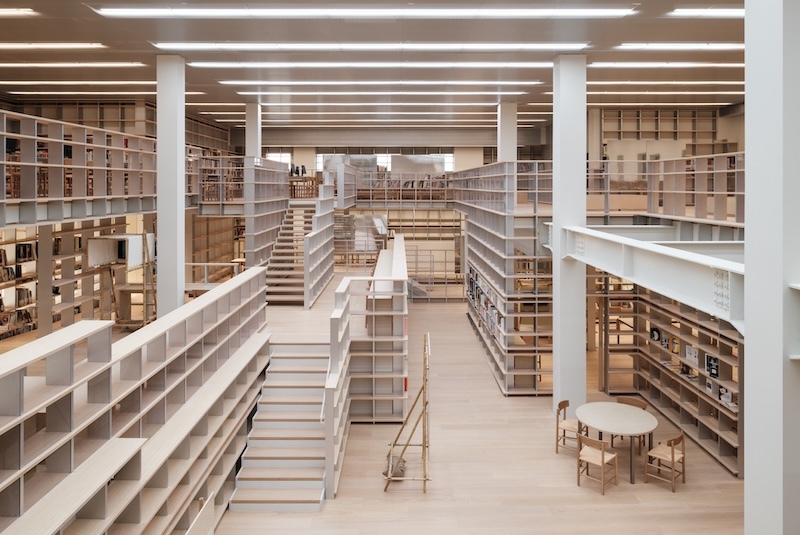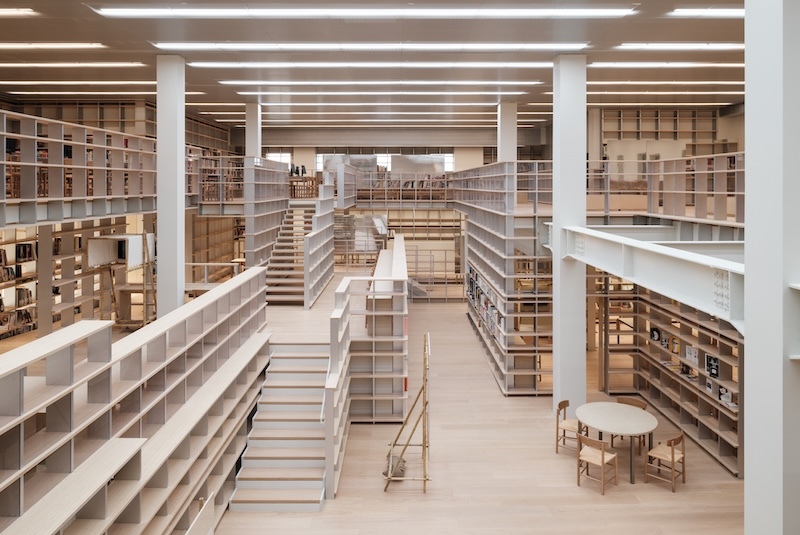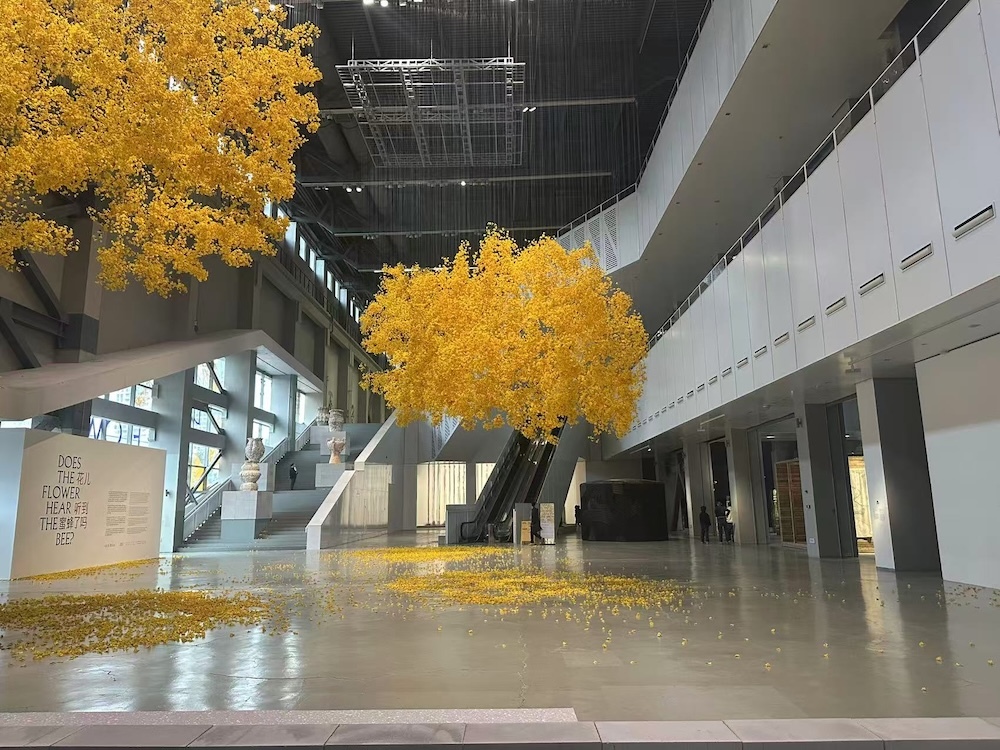

“Real art always appears in unexpected places, in corners where no one cares or calls out its name. Art does not like to be named, nor does it like to be called out by its name. Once this happens, art will escape,” said French artist Jean Dubuffet.
In 1945, Dubuffet proposed the concept of "brut art". Eighty years later, the Power Station of Art (PSA) in Shanghai reviewed the development of "brut art" with the exhibition "Unbounded: Lausanne Art Brut Collection and Other Visions", presenting works by "unknown" authors and "untitled" works collected by the Lausanne Art Brut Collection in Switzerland.

Exhibition view of “Unbounded: Lausanne Art Primitive Collection and Other Perspectives”
On July 11, "Unbounded: Lausanne Art Primitive Collection and Other Visions" opened at the Power Station of Art (PSA) in Shanghai. However, the first thing you encounter when you enter the exhibition is not the works, but rows of portraits. Their expressions are quiet and focused, with a kind of almost silent power. These are not "artists" as people are used to understanding them - they have never received academic training, have kept a distance from society for many years, and some even live in mental hospitals, prisons or nursing homes. It is in these corners that no one cares about that they quietly build their own spiritual universe and also build the foundation of this exhibition.

Exhibition View
It is reported that this exhibition is jointly curated by the Power Station of Art (PSA) of Shanghai and the Collection de l'Art Brut, Lausanne, Switzerland. It brings together 233 collections from 49 artists from the Collection de l'Art Brut, Lausanne, Switzerland, as well as works by four self-taught Chinese artists. It is combined with important documents, archives and images of the Collection de l'Art Brut since its establishment in 1976. It is the largest research exhibition on the development of primitive art in China to date.
“Each artist in the exhibition has led a difficult life. However, their works are not created by suffering and abnormality, but by a talent that they themselves do not recognize, and some qualities that are forgotten or wrapped up by busy people - simplicity, perseverance, and keeping true to themselves.” Gong Yan, Director of the Power Station of Art, said, “Today, more than 80 years after the name ‘art brute’ was proposed, we once again look back on its development and those shining ‘unknown’ authors and works, hoping to trigger a kind of thinking and perception about human nature, about the state of language before it is formed, and of course, about the future of art.”

Oswald Zittner, 25 People, 1971, India ink on paper, 21 x 14.8 cm. Lausanne Art Brut Collection (Switzerland). © Olivier Laffely, Digital Studio - City of Lausanne
What is Art Brut? A creation from the margins
Art brut refers to works created by self-taught artists who are outside the traditional art world. Art brut creators are often on the margins of society, or heretics, or isolated from the world, and are often indifferent to collective standards and values.
In the view of Sarah Lombardi, one of the curators of this exhibition and director of the Lausanne Art Primitive Collection, what the creators of primitive art have in common is that “their creations exist for themselves, in response to their own creative impulses or inner needs. They do not seek to become ‘artists’, nor do they intend to participate in exhibitions or gain public recognition. What primitive art represents is another path outside the official system.” This is also the meaning of the exhibition name “A Walk on the Wild Side” - inviting the audience to walk into the “other side” of this art, to discover primitive art, and to embark on a different path.

Anna Zemankova, Untitled, 1970-1975, ballpoint pen, colored pencil, pencil, pastel and gouache on paper, 62.5 x 45 cm. Art Primitive Collection Lausanne (Switzerland). © Marie Humair, Digital Studio - City of Lausanne
This kind of non-utilitarian creation, which is different from orthodox art, is exactly what the exhibition hopes to emphasize. The exhibits are divided into several chapters according to themes, namely "Inward World", "Character Image", "Living Things", "World", "Classified World" and "Invisible Realm", exploring the relationship between native artists and the world around them. These intertwined and multi-faceted themes allow the audience to constantly shuttle back and forth between individual universes, upside-down dreams and daily reality.

Exhibition view, Adolf Wolfli's works
For example, in the "Inward World" section, you can see the works of Adolf Wölfli (1864-1930). In the summer of 1945, Jean Dubuffet went to Switzerland and took the initiative to visit local mental hospitals and prisons, trying to find art forms outside the academic system. It was during this trip that he first came into contact with Adolf Wölfli and other brute art creators. That experience was extremely critical to him and was the starting point for his discovery of "brute art".
Adolf Wolfli spent most of his life in a mental hospital near Bern. He began painting at the age of 35, and eventually created a spectacular semi-autobiographical work. His works are known for their dense, phantasmagorical language, combining elements of religion, music, geography, fantasy, etc. to form a rhythmic visual structure.

Adolf Wolfli, Untitled (Budapest Time Wheel), circa 1922, Colored pencil and pencil on paper, 50.4 x 65.3 cm. Collection Art Nouveau Lausanne (Switzerland). © Arnaud Conne, Digital Studio - City of Lausanne
In the exhibition, one can see many native artists’ brushes filling almost every blank space on the paper, as if endless emotions are bursting out without boundaries.

Exhibition Works
The work of Aloïse Corbaz (1886–1964), one of the most important female artists of Swiss Art Nouveau, is presented in the “Figure” section. She was diagnosed with schizophrenia in her thirties and was sent to a mental hospital in 1918, where she began to paint. Hospital staff encouraged her to continue painting in 1936 and recommended her work to Dubuffet.
Her works are known for their rich and intense colors and symbolic language, often presenting courtly love scenes, opera characters or fantasy lovers, with exaggerated blue eyes as the characters' characteristics. She uses colored pencils, crayons, flower juice or toothpaste to create on recycled paper, stitching large areas and painting on both sides, often filling the pattern to the limit and making it impermeable to light.

Aloise Corbaz, Untitled (Château de Vincennes), 1941-1951, colored pencil on two sheets of paper stitched together, 69.5 x 175.22 cm. Collection Art Nouveau Lausanne (Switzerland). © Claudina Garcia, Digitization Studio - City of Lausanne.
On the edge of their works, you can see a blue circular mark, which indicates that these works are from Dubuffet's collection. In the process of appreciating the works on display, looking for Dubuffet's collection mark is a way to touch history.

The blue circular mark on the upper left corner of the work is a trace of Dubuffet's collection, indicating that it is the earliest collection of the Lausanne Museum of Art Primitives.
In 1971, Jean Dubuffet donated his collection of about 5,000 works, along with his collection of documents on Art Brut, to the City of Lausanne. The Art Brut collection was eventually housed in an 18th-century castle and opened to the public on February 26, 1976. Since then, the collection has continued to grow steadily with the addition of new pieces, donations of works, and the discovery of new creators of Art Brut. Currently, the Art Brut collection has more than 70,000 works.

Jean Dubuffet at the Collection Art Nouveau in Lausanne, Switzerland, February 1976. Photo by Jean-Jacques Lesser. Collection of the Collection Art Nouveau in Lausanne, Switzerland.
A dialogue about art brut
The exhibition brings together 233 collections from 49 artists from the Lausanne Art Primitives Collection. In addition to Adolf Wolfli and Aloys Kobaze, who initially inspired Jean Dubuffet, there are also indigenous artists discovered by the Lausanne Art Primitives Collection since its establishment nearly 50 years ago, such as Kōmei Bekki, Davood Koochaki, and Judith Scott.

Exhibition site, Totsugi Masayoshi's work
Their works do not care about materials or forms. The ready-made materials and tools at hand constitute the creative world of native artists. Therefore, in the exhibition, there are paintings, sculptures, fabric installations, stone carvings and other works, ranging from very small paper to large sizes, and even many works can see traces of splicing.

Exhibition view of “Unbounded: Lausanne Art Primitive Collection and Other Perspectives”
Among them, the Chinese artist Guo Fengyi (1942-2010) is of great significance. The Lausanne Art Primitive Collection has been collecting Guo Fengyi's works since 2007 and held a large retrospective of her works from 2011 to 2012; the Shanghai Power Station of Art also has many works by this artist in its collection. In this exhibition, these two institutions, which are deeply involved in the fields of contemporary art and art brutism, respectively, have brought out Guo Fengyi's works from their collections. The two also established a dialogue relationship because of her in the exhibition.

At the exhibition, Guo Fengyi's works are collected by the Lausanne Art Primitive Collection.
Guo Fengyi has been creating paintings since the 1990s. Initially, she painted to treat physical illnesses, but gradually developed into a strong spiritual expression. Most of her paintings are half-human, half-plant, ancestral, spiritual or symbolic images, which are intertwined in a network of fine lines like embroidery thread. Her works are closely connected to the "spontaneity" of primitive art and point to the unique oriental view of body and mind.

At the exhibition, Guo Fengyi's works are collected by the Shanghai Museum of Contemporary Art.
In Lombardi's view, Guo Fengyi's presence has opened up a real intersection for this exhibition - "art britische" is not only valid in the Western context, but there is a resonance between its spiritual core and the Chinese folk art tradition that penetrates culture and language.

Exhibition site, works by Ku Shulan.
Other Chinese artists exhibited in the exhibition include Ku Shulan (1920-2004), Zhang Buhua (born in 1941), etc. In Gong Yan's view, "art brute" is not a genre, but a state. It cannot be copied, inherited, or evolved. Its establishment is not due to the "consensus" of a group of people, but because of the complete "difference" of each individual.

Exhibition site, works by Zhang Buhua.
The exhibition has set up a special display area to commemorate Jean Dubuffet, the originator of the concept of "brut art". The archival documents preserved by the Lausanne Art Brut Collection are exhibited here, and the birth and development of the concept of "brut art" are sorted out in a chronological way, showing how it reconstructs our understanding and definition of art. "The power of brut art is not only that it makes us rethink what art is, but also that it redefines the ownership of art." Lombardi said.

Special exhibition area, Jean Dubuffet and the history of "Art Brut"
At the end of the exhibition, two sets of slides are quietly played, recording the original art environment - those buildings or installations located outdoors, in gardens or natural spaces. But like their creations, these environments are often destroyed and abandoned after the creators die. The exhibition is trying to leave traces for these unnamed creators.
The exhibition will run until October 12th.
- YNcunJNVh07/13/2025


